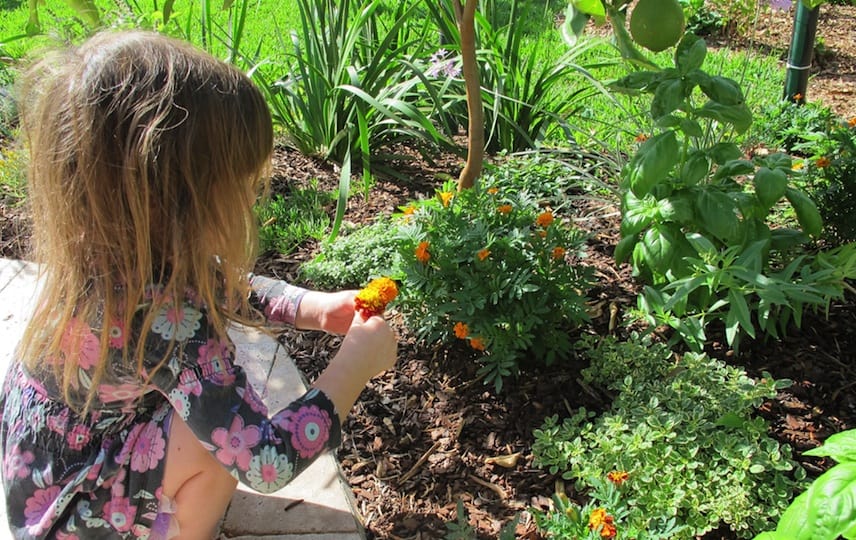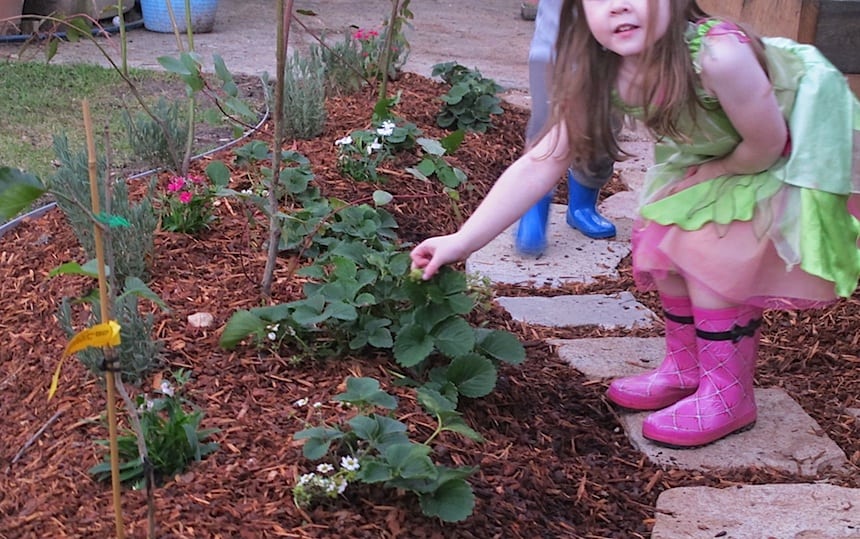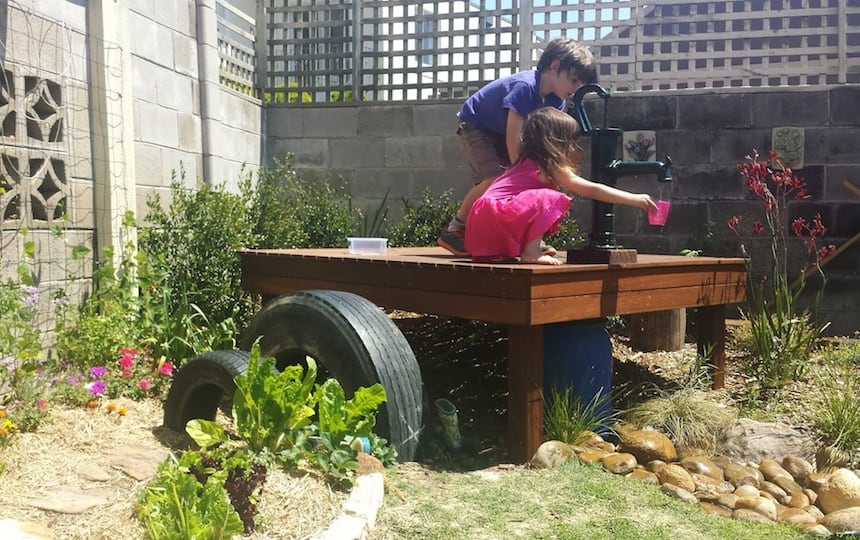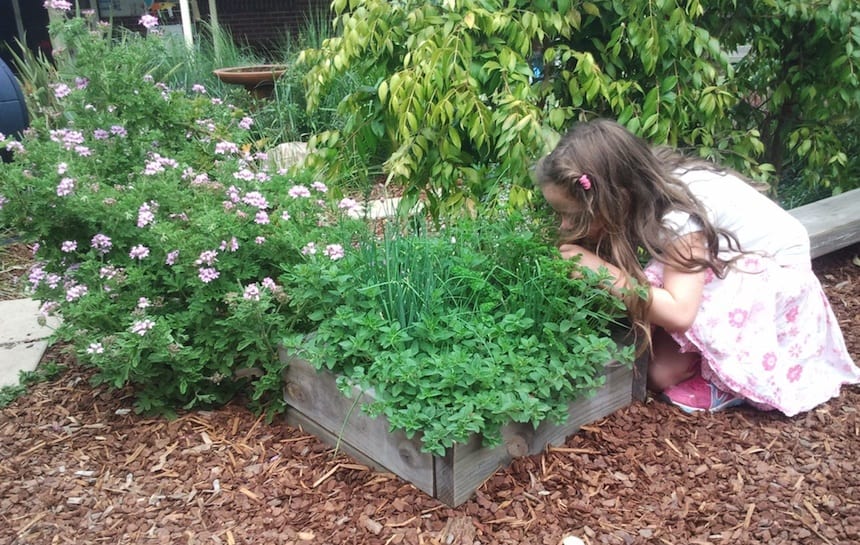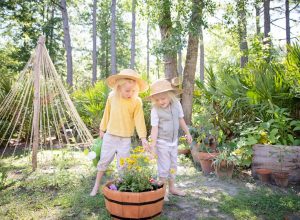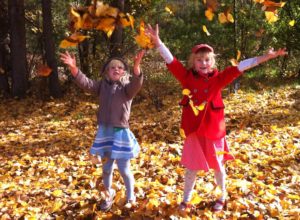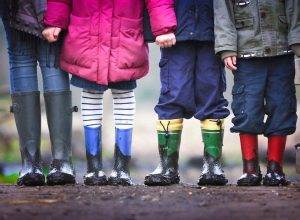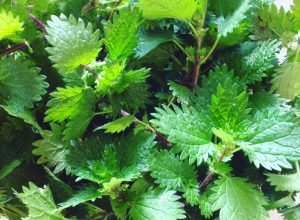The sky’s the limit for elements which make a garden interactive and engaging to the senses. We show you how to create an edible garden your kids will love.
When my four young children started exploring and playing in the garden, I set out to connect their outdoor experiences with my passion for edible gardening.
Here, I share some of the things I’ve learnt over the years designing and building sensory and edible gardens for kids.
Planning your sensory and edible garden
Plan ahead so that your garden can grow along with your children. The garden you create for your toddler will not look the same by the time he or she is a teenager. Use flexible construction techniques such as a loose brick edging, which can be repositioned rather than having to be jackhammered up if you want to make a change.
If renting, use easily transported containers, but also consider how longer-term investments in the garden will bless and inspire the next tenants who move in.
Consider how your garden will evolve over the next five, 10 or 20 years. Visit established gardens for inspiration, to see how years of composting and working a garden can radically transform a space.
Consider the changing needs and abilities of your children: in the early years supervision and safety, and being close to caregivers is important; in the middle years they increasingly explore and try out risky and messy play; in the teenage years they want to be alone or hang out with their peers.
Think outside the box
The best spaces and garden elements for a growing family are ones which are flexible in their use. Kids need spaces which facilitate rather than hinder their imagination and fantasy, especially where children’s intellectual, physical and social abilities differ greatly. Our society already bombards us with rules – why not create a haven for truly free play?
For example, a wide-spreading White Shahtoot mulberry provides climbing, adventure, shade, colour, leaf mulch, stick play and healthy snacking, all at a fraction of the cost of a factory-made structure which will break, rust, get mouldy and have to be added to landfill within a few years.
Or if you do want ‘play equipment’ in the backyard, consider a simple platform around a tree which holds appeal for teenagers and adults as well as toddlers.
Essential to a garden which promotes creative play is allowing for messiness. This can be as simple as a digging patch or sand pit, but children from about age five enjoy manipulating the soil, building forts, creating fairy parties and making ‘potions’ from things found around the garden.
While it may be a struggle to see the garden being ‘wrecked’, take comfort in the fact that the mastery children experience by shaping their environment will develop into confidence to shape their world in responsible and innovative ways.
Interactive, sensory and edible elements
The sky is the limit for elements which help make a garden interactive and engaging to the senses. Features can be as simple as a sugary-sweet dwarf mulberry tree, tree stump mushroom seats or a space allocated to messy and dirty play.
Nothing lures kids out into the edible garden better than the promise of newly ripened strawberries, blueberries and midjin berries; the sweet flowers of borage or pineapple sage; or the leaves of chocolate mint or stevia! Devise a ‘snack trail’ along paths and near seating areas as an alternative to junk food.
For textural interest, I use plants such as velvety lamb’s ear and feathery foxtail grass, and construct pathways made of railway sleepers, gum tree branch rounds and recycled pavers.
To engage children’s sense of smell I use plants like the rose-, coconut- and apple-scented geraniums; natives like mint bush or lemon-scented myrtle; and herbs like rosemary and curry plant.
Re-purposed objects such as a toilet bowl used as a pot for herbs, or a rustic wooden chest filled with succulents make for unique features.
Cultivate a passion for sustainable living
The habits you establish for your children when they are young have a lasting impact on their development into adulthood. Things like harvesting from the garden, composting scraps, and feeding the plants with worm ‘poo’ and ‘wee’ communicate tangibly the ways in which we are all connected to the natural systems of soil, air, water, animals and waste.
Such experiences with nature also help young children develop a real sense of concern for the environment, rather than feeling overwhelmed and disconnected through abstract global problems which they don’t yet understand.

